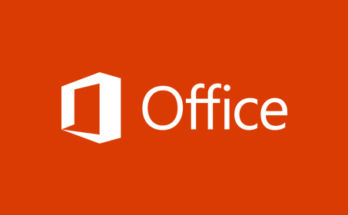Open Source Telephony
Open Source is now offering a real alternative to propitiatory solutions that are in the market today. For example, Android based phones versus the iOS iPhone. Linux vs Microsoft Windows. MySQL vs Microsoft Sequel Server. In fact, what is known as the LAMP stack which is linux apache web servers, Mysql and Perl is what the internet and the world wide web runs on today. With the publishing of the government’s digital strategy paper, encouraging the further adoption of open source within government departments, it’s clear that the rate of adoption within the UK is going to advance. The White House even, in the USA, runs drupal it’s content management a system for it’s own website. The government’s use of Open Source somewhat dispels the residual myths around Open Source’s security and reliability issues. It’s worth considering the two models of software development. The proprietary model, for example, is driven by a company road map and their own corporate requirements.
It tends to be developed by in house staff or sub-contractors. The purpose is generally to create intellectual property in the company sometimes protected by patent. It’s typically distributed in an object form and is protected by very stringent license restrictions. The Open Source development model, however, is slightly different. It tends to be driven by need, interest, or opportunity either of an individual or a community of individuals that contribute back to the program. It’s downloadable as source, and it’s licensing is very open, giving you the opportunity to take the source, recontribute to it, or take it on further to exploit it for your own benefit. However, it’s important to note that the use of Open Source is not always totally free to use.
The original name is the Free Software Foundation and that name has gone really to show that it was freedom of use not free in terms of cost. And whilst the software may be free to download, typically there’s an implementation cost that has to be considered.
Open Source technologies are applicable to most industry sectors and the communication sector being such a vibrant industry is no different. However, before deciding on which technology you wish to use for your open source projects and communications there are a number of things to consider. There are numerous Open Source projects focused on the telecommunications market space. So it’s worth considering what you actually need it for. Are you a teleco that’s looking to build a big switching network? Or a teleco even that’s looking to build a very large value added network over and above your basic switching infrastructure? Or are you corporate looking for a telephone system or PBX or a contact center? Having decided what you require the project for it’s worth considering several factors around the technology you may wish to consider.
For example, how long has the community been in place and how vibrant is the community? How many downloads have there been of the software and how widely is it deployed? Can you find reference sites for people that have used the technology? And how big is the ecosystem around it? For example, can you get hardware manufacturers or other software vendors that have claimed to have integrated successfully with your product? It’s important when you embark upon an Open Source software project that you’re following a path which many people have trodden before.
Thirdly, think carefully about what it is you want to deploy. The communication space is a very complex area. And many of the Open Source projects will deliver you a toolkit, a functionality that you can piece together to build the solutions you require. However, there are some telephone systems that can be supplied with basic PBX functionality, such as, elastics or tricks box based on asterisk. You need to consider whether you have the skills in house that can connect whatever you build to the outside network.
You’re going to want to connect to SIT networks or the ISDN to make sure that you can get through to the PSDN to make your calls. If you don’t have the skills in-house, you’re gonna have to consider an implementation partner, a systems integrater if you like, with Open Source experience. Carefully consider their size, the skills they have. Do they have reference sites and can they provide you with ongoing support once the implementation is completed? Having considered what it is you need, the technologies and the skills you need to deploy them. There are 3 core Open Source projects that will come to the fore. Camilo, a sit proxy, that is used in carrier networks. Free switch, which provides value added services also on a very large scale that are very often be embedded within a carrier network.
Asterisks can be built into telephone systems for corporates from contact centers that has the functionality that most corporate customers would be used to and need to deploy. Clearly the communications industry is a complex one. A master carrier may well have the skills in house to deploy a Camelio project. Most corporates won’t have the skills to deploy a telephony project themselves and they’ll be looking for the right partner.
When you are going to partner with somebody to grow your Open Source project there is a number of things to consider. One: clearly the company credentials. How long has the company been operating? What is its ownership like? Is it profitable? Two: the technologies that they are experiencing. Have they implemented Camelio before or are they really only Asterisk specialists? Look at the skills and resources and the volume of resources they have.
Clearly you want to ensure the partner has implemented the technology of choice before. So, it’s imperative to look for reference sites. And finally, the key will be the ongoing support they provide once the service is up and running for you. Open Source communications projects, especially those provided in tool kit form, offer you the ability to voice enable so many applications within your business to truly enhance the service you provide your customers. But it’s absolutely critical that you choose the right project and the right partner to implement it with. .
As found on Youtube





